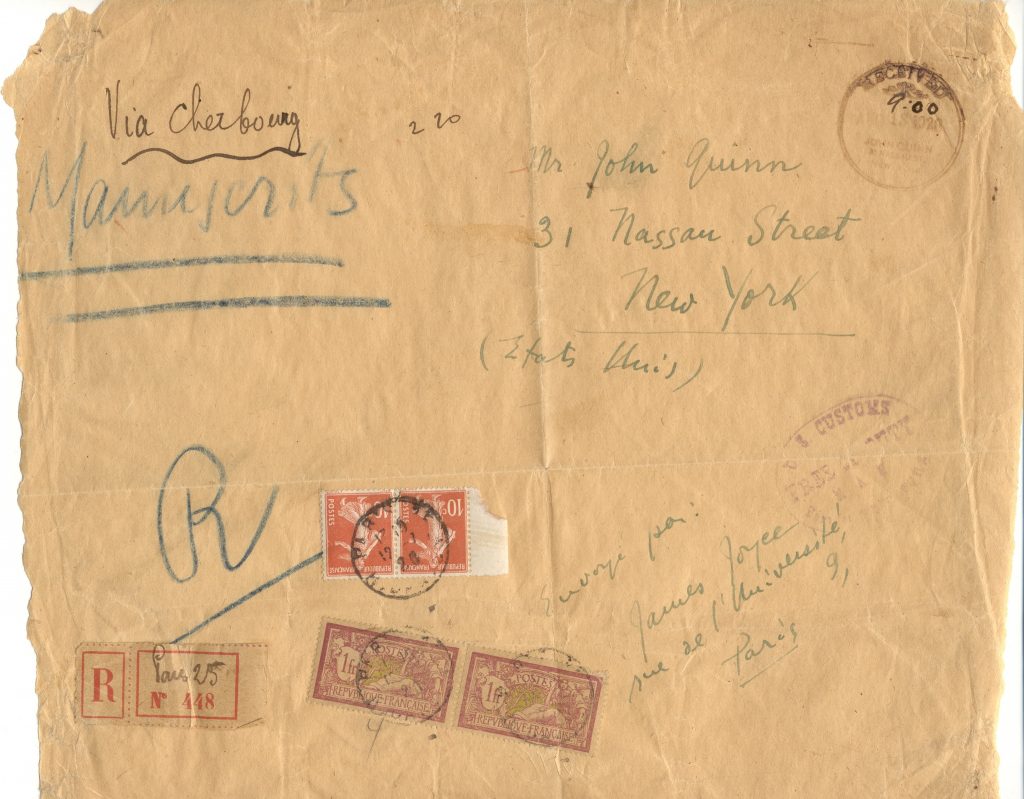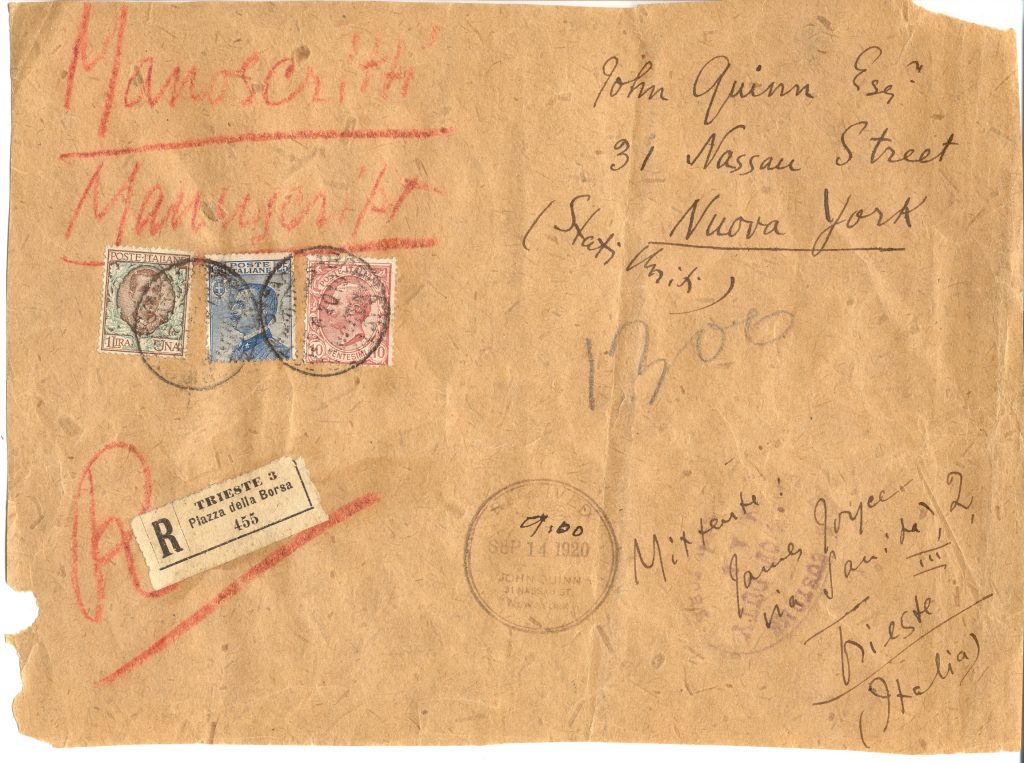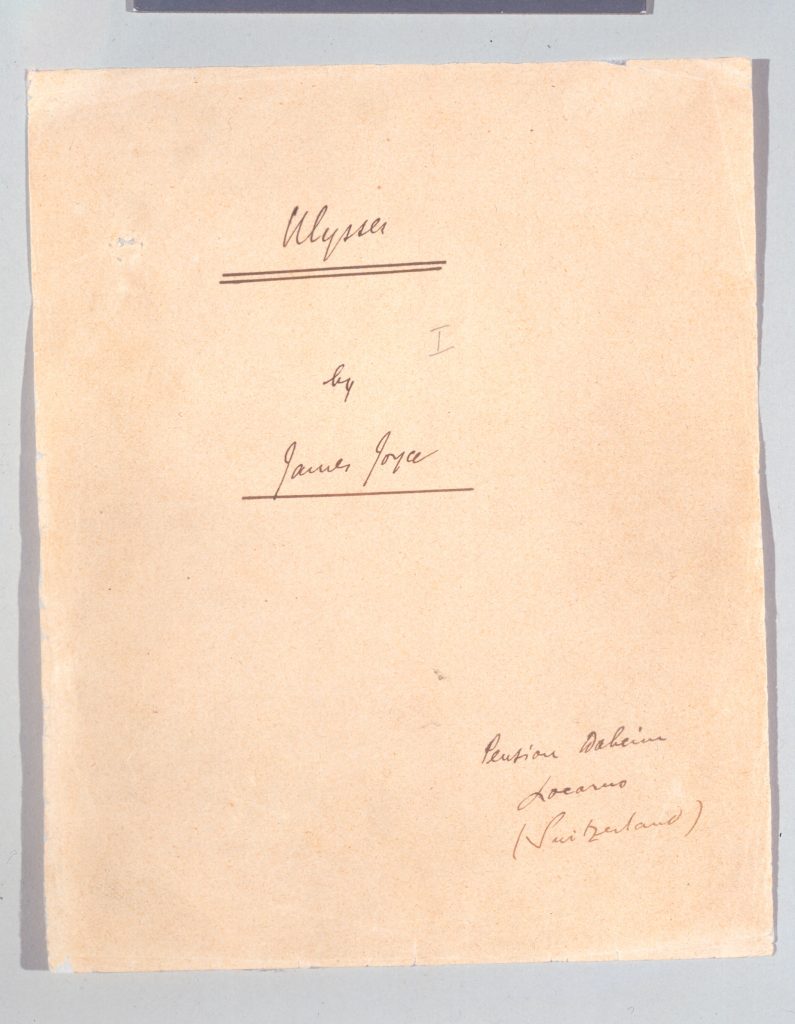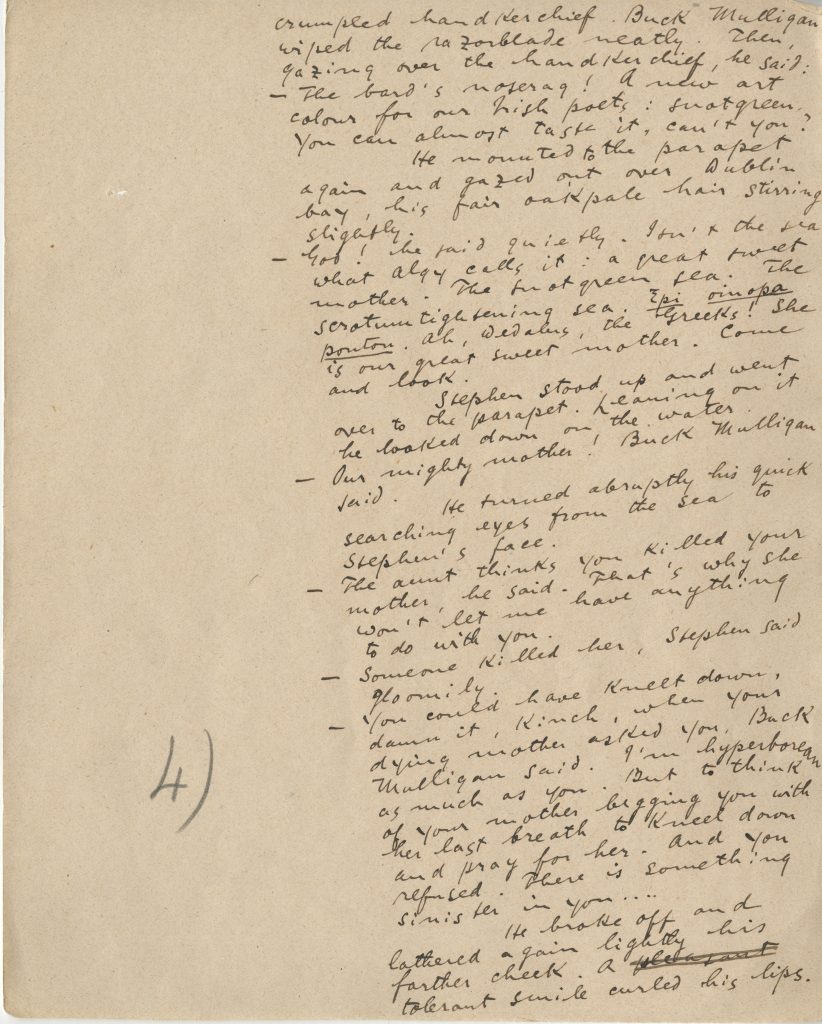Hi there, Joyceans! This is Judy Guston, Curator and Director of Collections at the Rosenbach starting a new addition to Ulysses Every Day! This Bloomsday will be my 22nd at the Rosenbach! This year, from now through our virtual Bloomsday, my Collections teammates and I will be sharing with you some illustrated stories about the amazing history of our Joyce collections, answering your questions, and asking you to give us some creative responses. I hope you enjoy them.
So, how did the Ulysses manuscript come to The Rosenbach?
Shortly before Ulysses was published in 1922, James Joyce sold the manuscript to John Quinn, an Irish American lawyer living in New York, who was a book collector and a supporter of artists and authors, including Joyce. Quinn had also defended the publishers of The Little Review when they were prosecuted in 1920 for their serial publication of Ulysses.


In these two envelopes, Joyce sent sections of his completed manuscript to John Quinn in New York.
When Quinn decided to liquidate his collections at auction in 1923-24, Dr. A. S. W. Rosenbach, a well-known collector and dealer of English literature—who also spent a healthy sum for Quinn’s collection of Conrad’s works in manuscript at the sale—purchased the Ulysses manuscript for a comparatively small sum of $1,975 in January 1924.


Unhappy with the price his manuscript had brought, Joyce asked to buy it back from Rosenbach at the same price. Rosenbach, who had purchased it for his personal collection, refused, but offered instead to purchase the corrected page proofs for Ulysses. Joyce never responded to Rosenbach, but in May 1924 wrote to his patron Harriet Shaw Weaver, noting that “when he receives a response from me all the rosy brooks [“Rosenbachs,” as expressed in the company’s cable address, ROSEBROOK, that Joyce clearly noted] will have run dry.” With that, Joyce enclosed one of his famous rhymes:
Rosy Brook he bought a book
Though he didn’t know how to spell it.*
Such is the lure of literature
To the lad who can buy it and sell it.
*It seems that the telegraph operator had misspelled the title of the book in Rosenbach’s message.
And now, dear reader, I challenge you to joust with Joyce—no easy task, as you know—and post your own verse in the comments. If you do well, I promise to share two more of Joyce’s left in a Rosenbach artifact in a future post. Till then….
